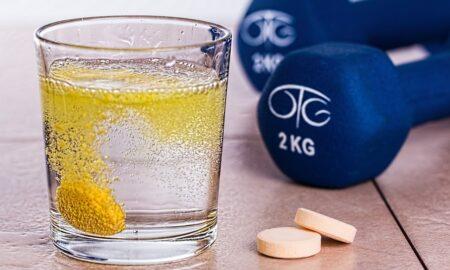

Expert advice for over-40 athletes about training, supplementation, nutrition, hormones and more.
By Jay Campbell and Jim Brown
Leonard: Please list the pros and cons of high-intensity cardio for an over-40 individual.
High-intensity exercise can be beneficial for aging athletes when rapid fat loss is necessary in the shortest time possible. However, it can also be counterproductive to individuals with less muscle mass. Remember, it’s crucial to retain as much lean skeletal muscle as possible to maintain an optimal basal metabolic rate while at rest.
Frank: Isn’t all protein the same? Why should I spend the extra money on “pure” protein versus products that have proprietary blends in the big-box stores?
Learning how to read a nutrition label is a must if you are truly trying to optimize your health. You will have to supplement your food with certain minerals, vitamins, and likely protein. One of the tricks of the trade is putting ingredients into a proprietary blend. It’s a way for a company to protect its formula from being copied and fueling competition. In many cases, however, it’s used to enable a company to use less than clinical dosages in a formula and still claim the ingredient on label. This is done to prevent the company from investing in costly raw material.
To better understand what we’re talking about, let’s look at protein first. There are three main classifications of whey protein.
| Type | Protein | Lactose | Fat | Common Application |
| Whey Protein Concentrate | 25-89% | 4-52% | 1-9% | Protein beverages and bars, confectionery and bakery products, infant formula, and other nutritional food products |
| Whey Protein Isolate | 90-95% | 0.5-1% | 0.5-1% | Protein supplementation products, protein beverages, protein bars, and other nutritional food products |
| Hydrolyzed Whey Protein | 80-90% | 0.5-10% | 0.5-8% | Infant formula, and sports and medical nutrition products |

As you can see from the chart above, if you are buying whey protein concentrate (WPC), you could have a product with 25 percent protein in it or 89 percent. It won’t specify on the label. You can try and find out by looking at the serving size in grams versus how many grams of protein you get in that serving. That is, if the label is honest. WPC is a decent choice if cost is a major issue; however, in today’s world you can find a quality whey isolate without going broke.
When looking at a nutrition label, ingredients are listed in order of amount found in the product. Meaning, the product will contain more of the first ingredient listed than the following ingredients, and so on. In a protein formulation that does not rely on a proprietary blend, we know that it’s mostly WPC followed by WPI and then soy protein and flavor, etc.
- Ingredients: Whey protein concentrate, whey protein isolate, soy protein, natural and artificial flavors, sugar, sodium, xanthan gum.
With a proprietary blend, however, manufacturers can throw parentheses around the ingredients and circumvent the labeling laws. The blend is listed first as the largest ingredient by volume, but the items in the parenthesis are not. The product in the example below could potentially contain more maltodextrin than hydrolyzed whey, but that’s hard to detect from the label.
- Ingredients: Super-Duper Whey Blend (whey protein concentrate, hydrolyzed whey, powdered milk), natural and artificial flavors, maltodextrin, sucralose, xanthan gum
Tony: Will intermittent fasting slow down my muscle gains? If used in conjunction with a nootropic/preworkout, will it help clear brain fog and curb appetite?
Intermittent fasting is definitely misunderstood in the realm of fitness and body building. The human body is extremely efficient, and “fasting for intermittent periods” will not catabolize muscle tissue. It could, however, slow down lean-tissue gains depending on whether the person is eating the necessary calories (over his maintenance intake amount) during his feeding window. In answer to the second component of the question, there are many different thermogenic and nootropic supplements that suppress appetite and increase focus. So the answer would be: yes, in theory. That said, we personally do not perform resistance training in a fasted state.
Richard: What are some training methods I can adopt to target fast-twitch muscle fibers?
This is an interesting question but doesn’t require a complicated answer. Humans are born with a specific amount of muscle fibers. These fibers are also of a specific fiber content. Some are slow-twitch and others are fast-twitch. There is research that shows that certain types of training can adapt muscle fibers so that they change a wee bit. But all in all, you’re born with what you’re born with. So train with compound movements at varying rep ranges to theoretically tax all of three energy systems necessary to stimulate fiber enervation and growth.
Anders: With strength training, one can hit plateaus and workouts can become non-productive because of the body adapting to the stimulus. Can this happen with cardio as well?
Let’s hit the lifting portion first. In Jim’s training system, Forged Training, the lifter is always training to positive failure and keeping a log book. If they fail to either beat reps or weight, they change movements and/or order of movements performed for a given muscle group. Your body will adapt. In my opinion you must keep trying to progress in some way to keep ahead of the adaptation, given that hormones and diet aren’t the limiting factor. Obviously, this applies if your goal is to get bigger and stronger.
As far as cardio, again, yes, you will adapt, especially if you train as you should for cardio and be slightly out of your comfort zone. I will go through periods of time where I’m performing more than a normal amount of cardio and I notice that just to break a sweat I’m forced to change machines and to certainly vary the intensity.






















You must be logged in to post a comment Login